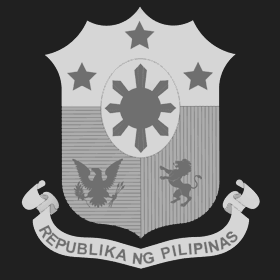Milestone
- MILESTONE
- |
- AWARDS
After four years of research and development, the PRiSM Unit was established in 2018 at PhilRice to serve as hub in generating data, maps and other information products; manage field activities; and maintain a centralized systems and database.
![]()
The PRISM project was conceptualized in 2012 while the pre-implementation activities were conducted starting October 2013 and the actual research implementation started in 2014 with a kick-off workshop participated in by project partners and DA-Regional Executive Directors. Development of protocols for data collection started and training events were conducted thereafter.
The first group of DA-RFOs that implemented PRISM from the second semester (wet season) of 2014 were: Cordillera Administrative Region (CAR), Region 3 (Central Luzon), MIMAROPA, Region 5(Bicol), Region 6 (Western Visayas), Region 7 (Central Visayas), and Region 8 (Eastern Visayas). The first damage assessment was conducted in July 2014 for Typhoon Glenda (International name: Rammasun) which affected Regions 5 and 8.
A total of 13 field monitoring and crop health assessment protocols were developed. Rice area mapping and monitoring, yield estimation, field monitoring, and application demonstrations were conducted in the seven pilot regions. The monitoring activities in these regions continued until the first semester of 2015. Before the implementation of field activities at the DA-RFOs in 2015, testing of field protocols was conducted by PhilRice to determine usability, workability, and timeliness. In the succeeding years, testing of any changes in the field protocols and field ODK forms was conducted first within the cropping season and then implemented in the next cropping season upon approval of the PRISM Management Team.
![]()
In the second semester of 2015, the other DA-RFOs also participated in the implementation of the PRISM project. The rest of the DA-RFOs joined PRISM and contributed to the overall budget specifically to (1) support training needs of the RFOs, (2) purchase equipment for the region, (3) perform field work in the region, and (4) validate PRISM products in their respective region. In the same year, PRISM started planning for its sustainability and institutionalization within the DA. A prototype PRISM web interface was developed and the participating regions started to receive PRISM products via the web interface. The cloud-computing platform for PRISM was also developed at IRRI-HQ starting in 2015 in consultation with sarmap. Regular review meetings among PRISM partners were carried out to assess the products in terms of both relevance and quality.
![]()
In 2016, the above activities continued. In addition, refinement of the PRISM online portal and products based on user feedback was implemented. The PRISM website was soft-launched in the second quarter of 2016. Transition activities, particularly in the mapping and yield estimation component, also started in 2016.
![]()
In 2017, the project shifted its emphasis to capacity building for the sustainability of PRISM. Transition activities continued and parts of the main activities such as yield estimation were completely transferred to PhilRice. A PRISM external review was also conducted toward the end of 2017.
Executive seminars, national and regional workshops, and consultations were conducted every year to keep all partners informed and engaged. Training activities were also provided to key implementers on a regular basis during the project duration to ensure smooth transition from research to operation. Communication and management plans were implemented through the project coordinators based in the DA (Quezon City), IRRI-HQ (Los Baños), and PhilRice Central Experiment Station (Nueva Ecija).
The Administrative Order creating the PRISM Unit in PhilRice and the Special Order creating a Technical Working Group (TWG) consisting of PhilRice, DA-Information and Communications Technology and Services (DA-ICTS), DA-Field Operations Services (DA-FOS), and IRRI to support the operationalization of PRISM were both signed by DA Secretary Emmanuel Piñol in August 2017.







